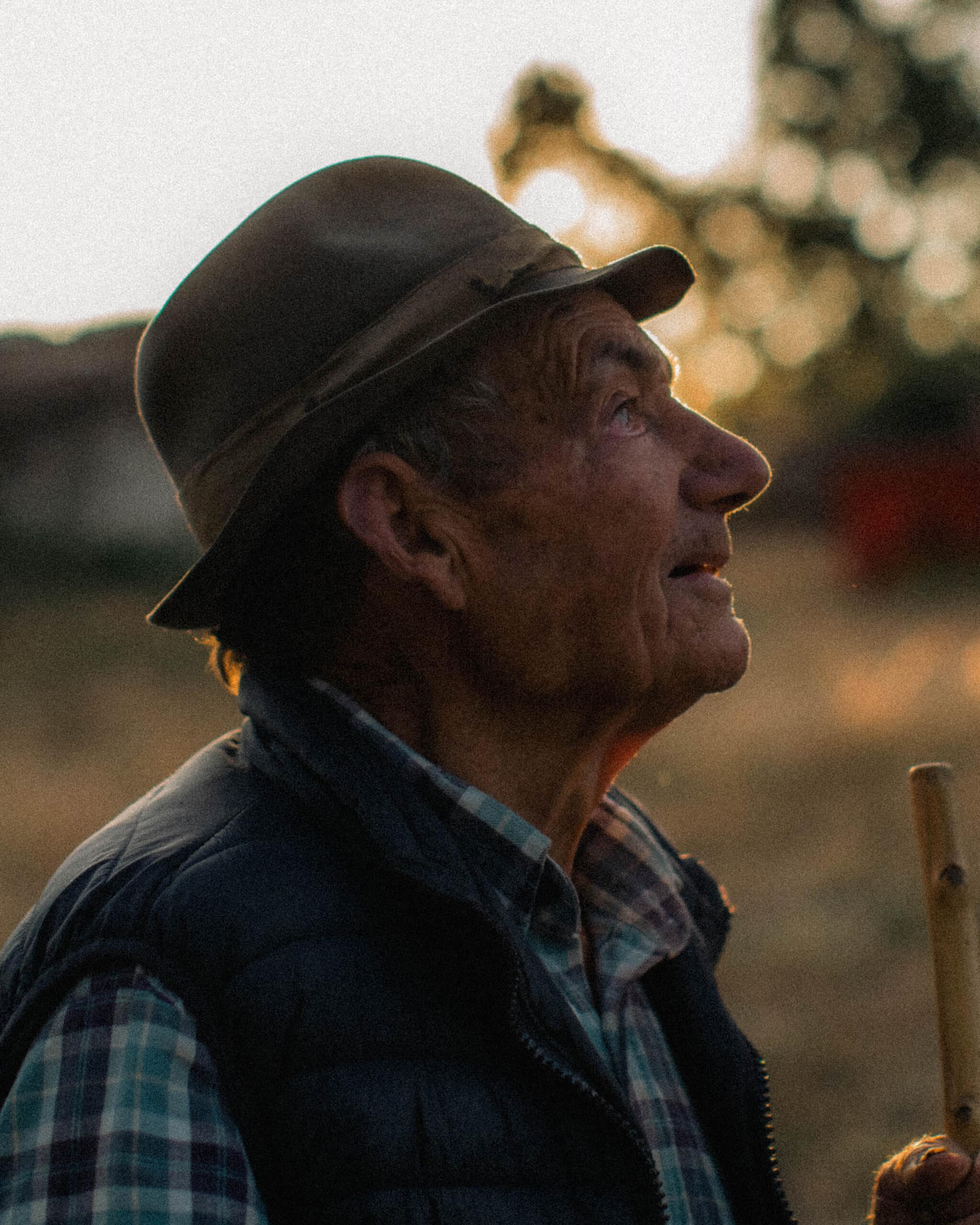Night had begun to fall when we found the small dirt track. We’d already traveled for over two days to get here. The Serra da Estrela, Portugal, is a place like no other. On surface level you see deep forests, steep gorges and sunsets that remind you of the African plains. But as you look a little closer you begin to see a lie: Invasive eucalyptus, roots deep, water hungry, make up the majority of the jungle. Planted for the toilet paper industry after the Second World War, these trees are perfectly suited to this dry arid environment. Where Eucalyptus stops, seas of maritime pine – thin, tall, closely packed – flood to the plains below, another alien from post-war industrialisation. What is initially a beautiful sight is in fact a matchbox mountain, just waiting for a spark.

The steep dirt track down to the shepherd hut within the Bio-Estrela.
As filmmakers we were here to tell the story of Bio-Estrela – a hopeful project looking to unite the farmers and landowners of the Serra da Estrela to remove invasive species and replant native tree species, harnessing their natural anti-fire properties and in the process restoring their water tables. We turned down the dirt track and made our way to the small farmstead that would be our home for the next two weeks. We met Louis, the local shepherd, and set up camp. No water, no electricity, no toilet, complete perfection. Time for sleep.
The next few days were spent orienting ourselves with URZE (Associacao Florestal da Encosta da Serra da Estrela), the local conservation team behind the Bio-Estrela Project. We would traverse mountain passes lined with giant eucalyptus. Tarmac gave way to dirt track and soon led to a dried up river bed. Intricate stone terraces clung to the valley’s sides, built to hold water and stop soil from being carried away. Miles of old stone canals take clear water to every farm. They flow from sources deep in the mountain sides but are now left dormant, pent up, ready. URZE showed us how fear of wildfires left these farms abandoned and prone to overgrowth of more fire-loving plants driving a negative feedback loop of abandonment and fires. Young locals left, seeing no future. It was now time to visit the extranjeros – a local word to describe people who’ve moved to the mountains from elsewhere. It was here where we could see what a future could look like.
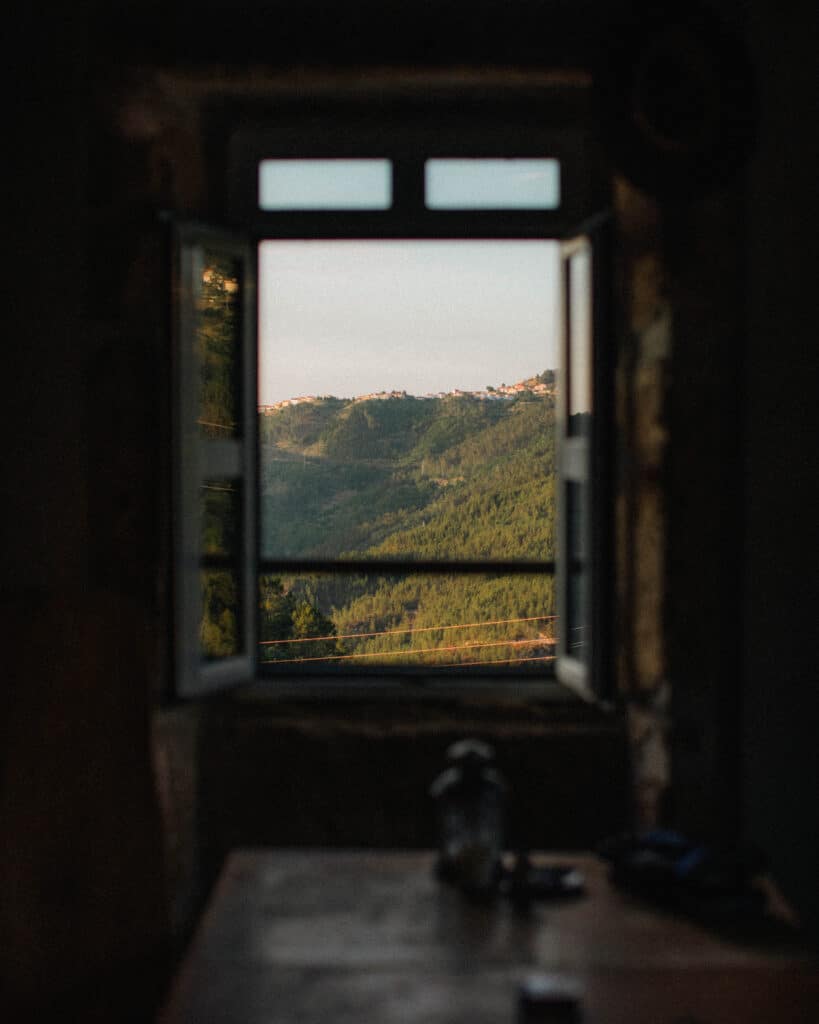
The view from the shepherds hut out onto the farmland below.
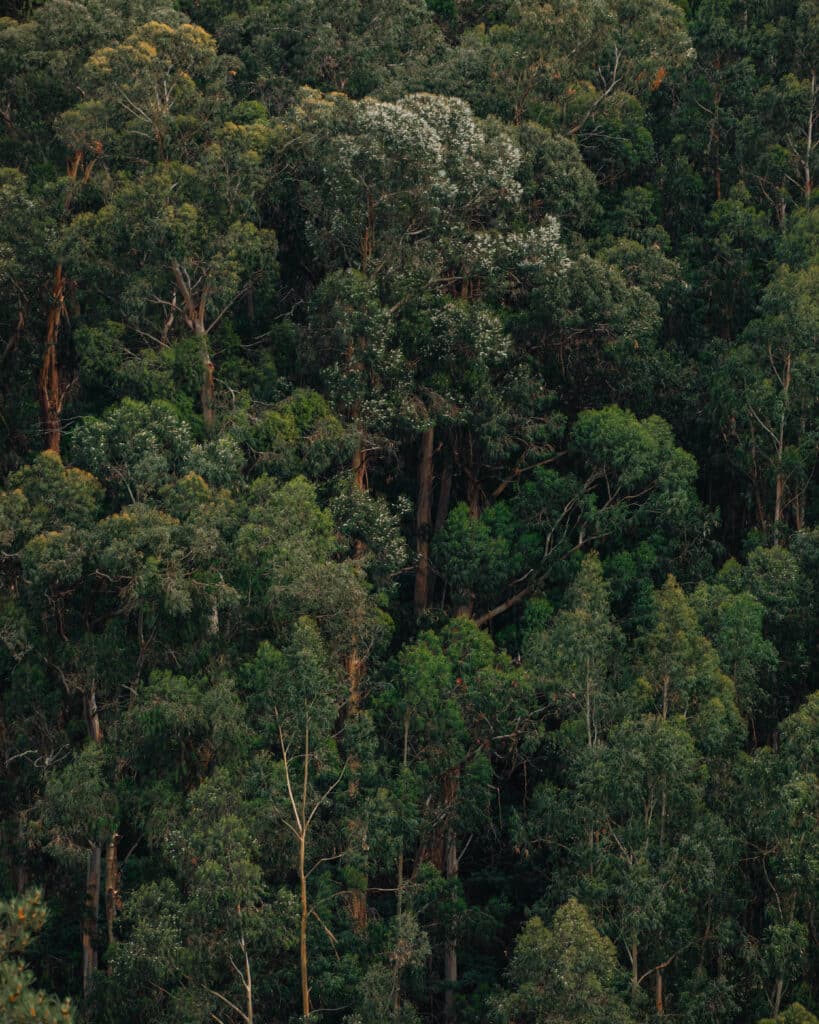
A dense wall of water thirsty eucalyptus. Beautiful but invasive.
We stood on the edge of the road looking down across 50 hectares of burnt wasteland. Blackened totem poles poked up from the ashened floor. “30, 30, 30” said our Portuguese guide. I soon realized that he was trying to tell me. It took only thirty minutes for over 50 hectares, 124 acres, to go up in flames. A forest with the fate of Pompeii. Imagining the fires is a difficult mental exercise. In 2022 alone, 20% of the Serra da Estrela, 30,000 hectares, went up in flames. That’s over 40,000 football pitches. It was time to get back in the truck, this was a detour after all. Mary, a local extranjero was expecting us.
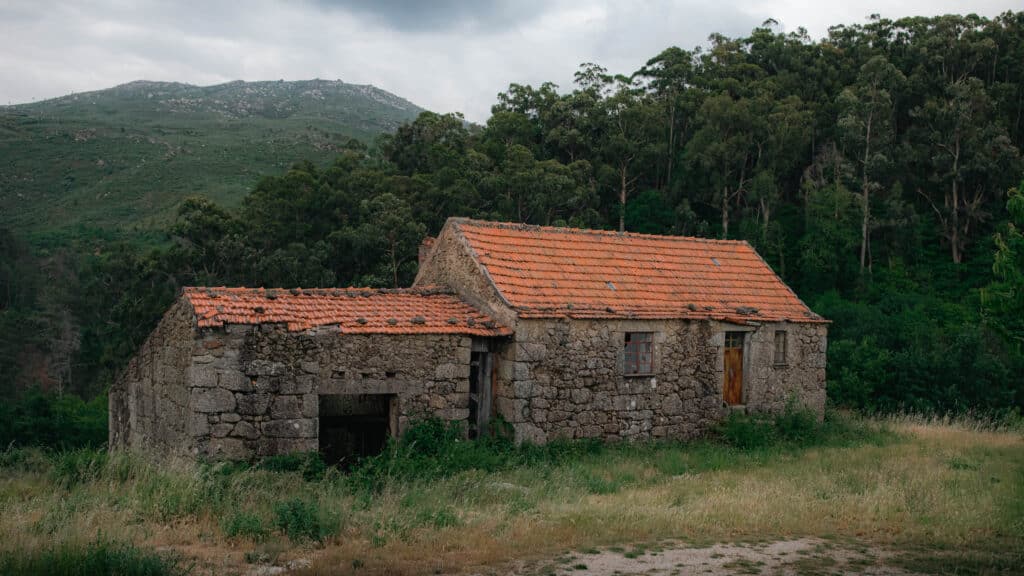
Abandoned farmstead, common across the Estrella.
Mary’s farm was small, her land almond-shaped. Close to her home were vegetables, fruit trees, and a pond. Beyond, there were native trees like oak and horse chestnut, leading to a thick wall of pine. Mary hass been partnering with URZE to combat this thick wall of pine and restore native trees. The trick? Gradually remove pines and use the shade from their evergreen canopies to nurture native saplings. Only once the saplings are big enough to survive on their own do you remove the flammable pines. This may seem like a simple process, but it’s effect is obvious everywhere you look. In the Estrela, patches of resilient native woodlands stand out against wildfire scars. This is a simple method to turn the table on the fires, improve water systems, and increase biodiversity. All the movement needs is money.

The winding roads that traverse the Estrella

Ed (me), besides a giant Eucalyptus tree.

Ollie, cinematographer and co-founder of Here Now Films
At URZE HQ, Beatrice, an expert ecologist from URZE, unveiled a map of Bio-Estrela. This wasn’t a typical map; it was segmented into boxes each representing a unique conservation strategy and land use. Beatrice showed us the farms that needed more persuading to join the movement and the farms that were well on their way. The point was not to force things. It was to work with people to make a living on their land and bring back the native woodlands at the same time. One of the most exciting ideas driving this project is the creation of one of the world’s first biodiversity credits. These work exactly like the more widespread carbon credits, but instead of selling carbon offsets, you’re selling an increase in biodiversity. If the team could work out a way to measure biodiversity now and after planting, they could create biodiversity credits to help fund the revolution. The big issue, of course, is funding the creation of the first credit.
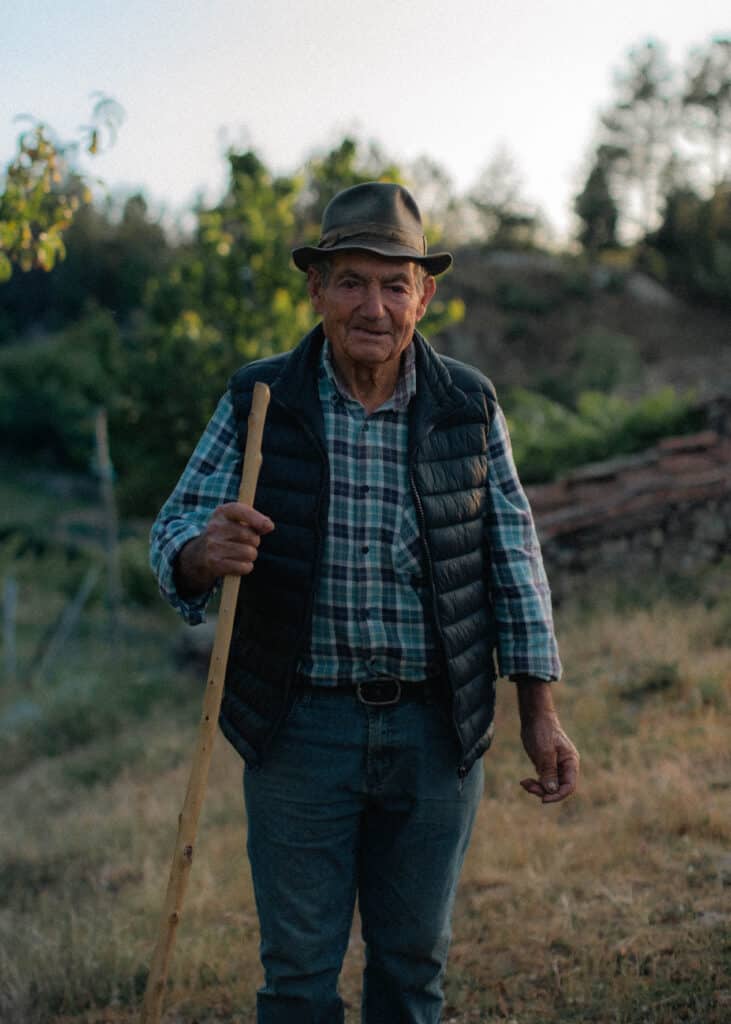

Louis, the local shepherd who lives on the land where we were staying.
You should never doubt the power of a small group of thoughtful, committed individuals in their ability to change the world. For the Estrela mountains in Portugal, this couldn’t be more true. What’s most important about their mission to create genuine biodiversity credits is that we would finally have a blueprint that takes not just carbon into account, but the wildlife, ecosystem services and cultural importance of the land use in terms of farming, all in one package.
This is real ecology, real science and soon will fit into the new climate economy as one of our most important forces in turning the dial on climate change.

Carlos, a local Portuguese man trying to revive the youth culture of the mountains.
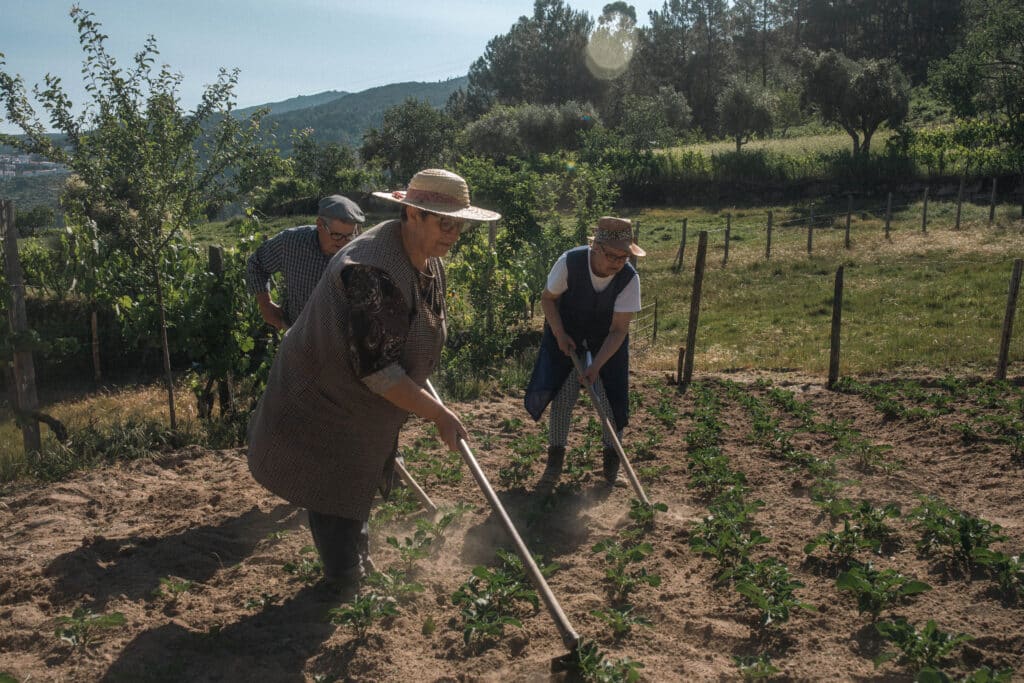
Local subsistence farmers tending to their potato fields. We were lucky enough to be given a few potatoes from the last harvest.
For more information about the project and to keep up to date with progress visit C Level. To catch the finished film about the project when it’s released, visit Here Now Films.

